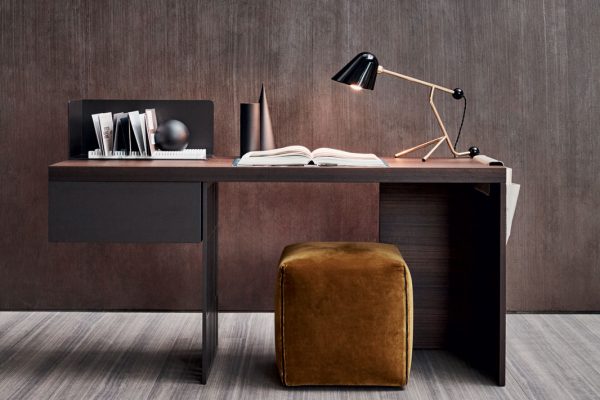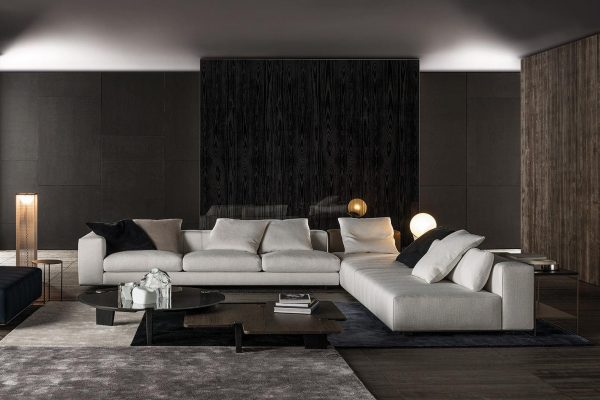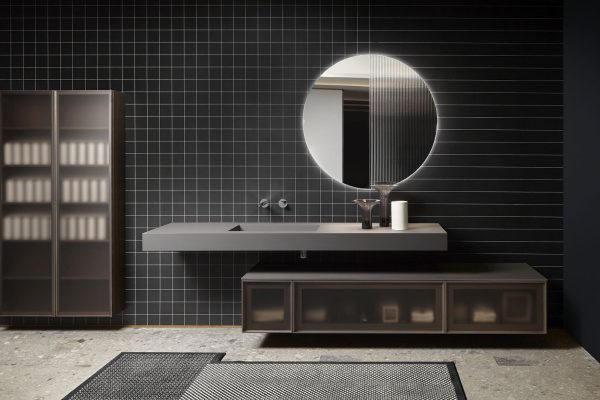The figure of Gio Ponti in Milan is fundamental for his rich production as an architect and designer: discover with us two Itineraries for the city in which we can find his genius.
An eclectic artist on par with few others in the artistic panorama of the Italian twentieth century, Gio Ponti is to all intents and purposes the lord of Milanese architecture; exploring the capital of Design on foot, we can identify two itineraries that retrace the places where his genius expressed some of his potential, leaving indelible traces of his passage.
Gio Ponti ‘s first path in Milan should certainly start at number 9 Via Randaccio, near theArco della Pace, where the first of the four family villas he designed and inhabited is located. Started in 1924, in conjunction with Gio Ponti ‘s artistic direction at the ceramic industry Richard Ginori, this pale green mansion is rich in the neoclassical elements that would determine the artist’s early style; it is also characterized by a fan-shaped floor plan topped by obelisks and, inside, consists of apartments with almost no corridors in a total fusion of rooms.
Taking a ten-year leap forward in time, as we wander curiously inside the Simplon Park, we would come across the extraordinary architectural-scale design of the Torre Littoria tower that was built, in the record time of only two and a half months, for the 5th Milan Triennale and features a 109-meter-high tubular steel structure.
In these years Gio Ponti ‘s activity is expanding enormously, we are in the 1930s when he is called to direct Luigi Fontana and founds, together with Pietro Chiesa, FontanaArte. During this work experience he is able to bring to life great product design objects such as Bilia: a satin-finished lamp with an essential geometric shape composed of a cone and a sphere and endowed with extraordinary balance of proportions; Tavolino 1932: composed of two float glass discs 15 mm thick with a nickel-plated and brushed brass supporting structure; or Suspension Lamps 0024: an elegant tempered glass lamp articulated on horizontal discs in floor and suspension formats.
This first walk could end, then, in the area of Corso Magenta, a stone’s throw from Santa Maria delle Grazie where, at 42 Via San Vittore, we would encounter Palazzo Borletti: once home to the factory of the Borletti brothers, manufacturers of watches and sewing machines and among the founding partners of important stores such as La Rinascente, Upim and Standa. Here it was commissioned, from architects Gio Ponti and Emilio Lancia, the construction of a palace intended to accommodate Milan’s upper middle class when the Borletti family moved out of Porta Genova in 1927.
A second itinerary to discover the traces of Gio Ponti in Milan should go, in our opinion, to focus instead on the 1950s; these years were for Gio Ponti the period of his most intense and fruitful activity: having abandoned the usual references to the neoclassical past he turned, in fact, toward more innovative ideas and gave birth to his timeless masterpieces such as ‘la Superleggera,’ a chair designed for Cassina in 1955, a symbol of perfection and balance between solidity and lightness; the D.754 carpet for Molteni & C. in four-color pony leather and the D.655 chest of drawers characterized by white-colored drawer fronts with applied handles of various woods (elm, national walnut, mahogany, and rosewood) as well as the D.555 coffee table designed for his home on Dezza Street.
It is in this decade that Gio Ponti‘s best-known creation begins, from which our second journey will start, namely the construction of the Pirelli Skyscraper, which will represent a grand structural invention, the child of his reflections on the finite form, since it was conceived as a tower with a concluded tapering shape that emerges from the void that surrounds it as if to embody the entrepreneurial spirit of the time.
We conclude our excursus on Gio Ponti in Milan by mentioning the D.270 chairs designed for Molteni by now at the age of eighty, in 1970. His thinking in recent years has been increasingly focused on the concept of living, which leads him to believe how the home should be a simple thing to judge by the enchantment one feels when observing it from the outside, as well as living in it from the inside.
This idea led Gio Ponti to believe in a versatile home made up of movable elements, and it is this last message of his that gave rise to these wonderful seats that are easily moved, as they are lightweight and foldable, suitable in the most diverse situations in a home that modulates to our needs.
“What is perhaps most striking about Gio Ponti is his uncanny ability to bring out every aspect of the experience that anyone who comes to one of the situations he designed might have. Give him a chance to talk about a project he is working on, and you will find yourself experiencing through him, the reactions, impulses, needs and pleasures of many different people.“
Thus Charles Eames presents Gio Ponti on the occasion of the exhibition The expression of Gio Ponti. These words aptly express the profile of an architect and designer who, more than others, remained true to his profession by elevating it to the status of art and adding to the role of a craftsman the style and characterization of a learned and artistically avant-garde man.



